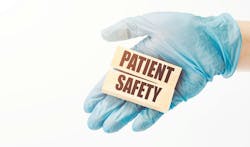A Chartbook on Patient Safety published by the Agency for Healthcare Research and Quality (AHRQ) highlights strengths and weaknesses in healthcare systems, and emphasizes the ongoing disparities in patient safety outcomes.
The reports in the Chartbook are based on more than 700 measures of quality and disparities covering a broad array of healthcare services and settings. Data generally cover 2000 through 2023. The reports are produced with the help of a Federal Interagency Work Group led by the Agency for Healthcare Research and Quality (AHRQ) and submitted on behalf of the Secretary of the U.S. Department of Health and Human Services (HHS).
The Chartbook is organized around setting of care; stratifying trends by care setting provides insight into which settings are exhibiting more or fewer measures improving, AHRQ said.
Through 2022, across a broad spectrum of healthcare quality measures, less than half (45 percent) showed improvement. Forty-one percent of person-centered care measures were improving overall.
More than half (57 percent) of patient safety measures were improving overall. The one measure with worsening results was “Adults who reported a home health provider asking to see all the prescription and over-the-counter medicines they were taking when they first started getting home health care.”
Both ambulatory care measures, 25 percent of home health measures, 57 percent of hospital measures, and all nursing home measures were improving overall.
The home health measure that is worsening is “Adults who reported a home health care provider asking to see all the prescription and over-the-counter medicines they were taking when they first started getting home health care,” which declined from 78.8 percent in 2012 to 73.3 percent in 2022.
The Chartbook put a spotlight on persistent patient safety disparities:
• People in poor households received worse care than people in high-income households for one-third (33 percent) of patient safety measures.
• Black patients received worse care than White patients for 43 percent of patient safety measures.
• Asian patients received worse care than White patients for one third (33 percent) of patient safety measures.
• American Indians and Alaska Native (AI/AN) patients received worse care than White patients for half (50 percent) of patient safety measures.
• Native Hawaiian/Pacific Islander (NHPI) patients received worse care than White patients for 40 percent of patient safety measures.
• Hispanic patients received worse care than White patients for nearly 20 percent of patient safety measures.


